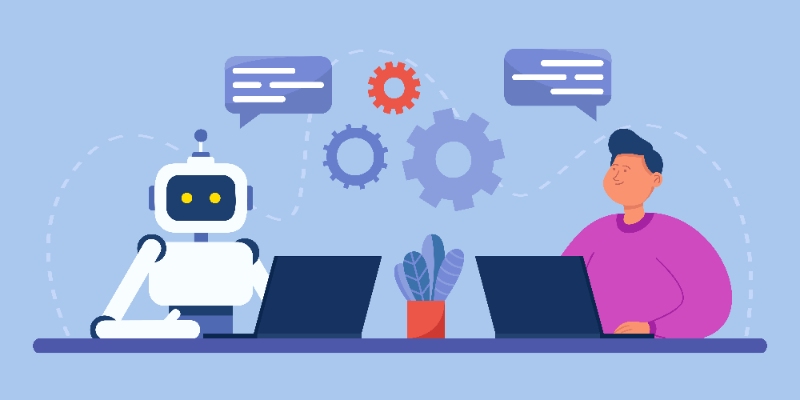
Explore the power of self-service demos in reducing customer support workload, elevating user satisfaction, and driving bottom-of-funnel traffic. Discover essential practices for implementing and optimizing demos for maximum impact on your customer experience.
When we do PLG right, we look at the whole customer lifecycle. This means how your customer interacts with your product at every stage, not just during discovery and sales. PLG also entails finding ways to enable customers to help themselves, easily, and without friction. Ideally, the less a customer needs to interact with your customer support staff, the better.
In that vein, if you're getting a lot of support queries and customers are reaching out to your sales people because they don't understand how to use this or that functionality, you have an opportunity to raise the customer experience bar.
But isn't customer interaction a good thing?! Yes, when customers want to do more with your product, when you launch something new that would interest them, when you've finally fixed something they were struggling with and when they're facing a properly gnarly problem.
But FAQs? No.
General usage questions? No.
Admin processes like password and user resets? No!!
Let me flip the script a little. Let's say you're out on a grocery run, and can't find that particular brand of oat milk that your daughter loves. Would you rather:
Walk the length and breadth of the store, desperately seeking oat milk?
Would you rather ask a harried store clerk?
Or would you rather follow the (well placed) signage to the nut milk aisle?
If customers are having to ring you for basics, you're creating a perception of unnecessary complexity in their minds, and that's where your competition can design their use case and get in. Moreover, you're wasting their time, and your resources - all to create interactions that aren't exactly memorable or overwhelmingly positive. Remember, in the SaaS world, we're highly, highly replaceable.
Why Self-Service Demos Are Essential for Customer Support
With PLG, we often unlock rapid growth: our products develop a certain virality, and we often see spurts of interest and growth that we hadn't planned for. As far as problems go, this is a great one to have. But, it does have its downside when it comes to managing their interactions on an ongoing basis.
User onboarding, when done sloppily, can result in a significant upsurge in customer support queries and unnecessary tickets. Most of the time in SaaS, we create our training modules, conduct train-the-trainer programs, and then we're out of the picture. We have no control over the quality of the training henceforth.
Of course, there will always be a couple of areas that confuse users - your product is complex, after all, and sometimes, some complex functionality does come across as complicated. Training, especially classroom training, can only do so much. It's only when users start using your product that questions arise.
This is where having a suite of optimized self-service demos serves as prevention. For one, it serves as automatic quality control in the way users are taught to use your product. Everyone gets to learn at their own pace, and nothing compares to the deep learning that comes from actually using the tool and getting one's hands dirty.
Moreover, having a suite of self-service demos for FAQs makes it possible for you to leverage your customer service and support chatbot to head off repetitive queries that don't need a person to address them. In fact, the slowest and most ineffective way to guide someone through complex functionality in an application, is blindly, over the phone.
Ask this guy.
Now, with your self-service demo suite, you can easily train your chatbot to qualify user questions and guide them to the right self-service demo. Once the user is in the demo, the chatbot can remain on standby, and hand-off to a person if there are further questions.
Not only does this empower users to solve their own problems more effectively, it lowers the load of repetitive questions and call volumes. This allows your customer support staff to spend more time with users who have genuine problems that necessitate that kind of time and attention.

Moreover, it lets you scale well - without chatbot enabled self-service demos, growth in your customer base needs a corresponding growth in your customer support staff. If you want to maintain customer experience, that is. On the other hand, when you have chatbot enabled self-service demos, you're continuously analyzing call volumes to identify which queries can be handed-off to the chatbot and self-service demo suite. You're also refining these demos to make them easier to understand and engage with. And you're making your chatbot friendlier.
Of course, there is a chance that you may go too far in the other direction and make it hard for customers to reach you. So, continuous customer feedback here is key to refining this approach.
Benefits of Incorporating Self-Service Demos in Your Marketing Efforts
Of course, a strong self-service demo suite is a huge asset for marketing teams. Not only can they design super targeted, super specific email and messaging campaigns; they can even leverage these for account based selling. This is where they can target different user groups and show them exactly why your product makes sense.
Generally, when marketing teams adopt self-service demos, they see:
Lowered CAC
Improved response rates on targeted email campaigns
Shortened sales cycles
More MQLs
Increased viral growth potential
More traffic from their website (especially so when a chatbot is deployed alongside)
Increased ability to create customer champions (because the effort involved in championing your product takes a sharp nosedive!)
All good things.
Best Practices for Self-Service Demo Optimization for Customer Support and Marketing
Step One: Identify key use cases, ICPs, and industries to target. You're doing this for your marketing campaigns, so no need to reinvent the wheel here.
Step Two: Resist the temptation to consolidate. You're creating a demo suite filled with targeted demos specific to each case, ICP and industry. If it feels like too many demos to start with, then identify the ones with the biggest volume, and begin with those. Also, maybe explore SmartCue - demo automation and demo creation never looked this good (or felt this easy)!
Step Three: Design self-service demos that are easy to navigate and understand. You want the benefits to be absolutely obvious to the user. If it isn't, then maybe this is a scenario better served through live demos where a salesperson can fill in the blanks.
Step Four: Follow all the tenets of mobile friendly design. Remember, most of us access our email via phone, and if your demo doesn't perform well on mobile, you're off to a poor start.
Step Five: Integrate demos into your website and marketing campaigns to cover each stage of the customer lifecycle.
Step Six: Continuous monitoring, testing and optimization. Don't make assumptions, A/B test instead. Find out what's working, and do more of it.
Which leads us to…
Monitoring Self-Service Demo Success with Demo Analytics
I can't stress this enough. Monitoring performance of your self-service demo suite is crucial for continuous improvement. A little goes a long, long way here. When you use analytics wisely, you can:
Find where users are getting stuck: and simplify those sections, or add more on-screen guidance to improve self-service demo user experience.
Find where they lose interest: and personalize self-service demos for better engagement.
Find which demos are working best: and calibrate your other demos.
Find which demos aren't generating conversions: and gather friendly feedback to understand why.
If you aren't sure which metrics to track or how to get started with analytics, we've got you covered.
Conclusion
Customers have evolved. Most of us live very full lives with challenging schedules and competing priorities. We expect stuff to work. And when it doesn't, we expect it to be fixed ASAP, with minimal fuss. Anything or anyone that asks us to have lengthy phone conversations with customer support staff that take away time from meetings, lunch, family or golf gets minus points.
Make it easy for your customers to reach you, yes. But also make it easy for them to do so while they do other things. A quick chat that results in a well qualified answer (especially in the form of a self-service demo) will always be preferable to calling someone. The best part? Your customers can do these in the middle of (ahem!) mandatory town hall meetings with no one the wiser. 😜
By offering self-service demos, you're empowering your customers and making their lives easier, ultimately leading to happier and more loyal customers. That's PLG in it's distilled form: the ability to give customers what they need and want, when they want it, and where they want it. Especially if that happens to be in the middle of a scintillating town hall. 😈


